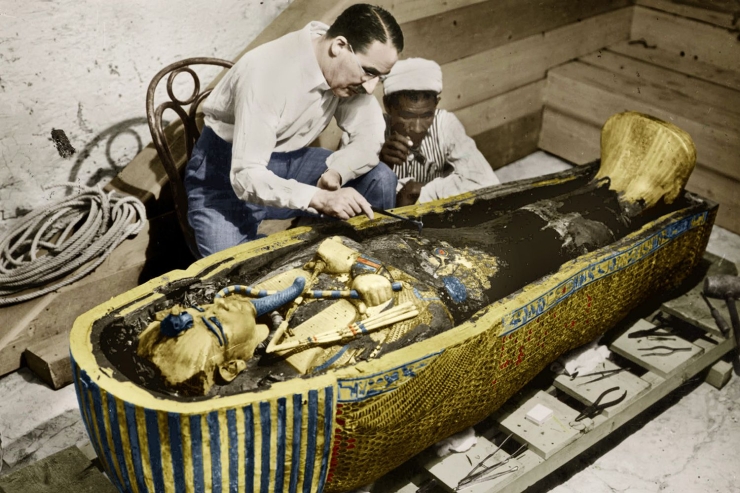Když mě bylo 12,měl jsme z knihovny vše našprtané. Strašně jsme to žral.
4.11. 1922 Carter discovered the entrance to Tutankhamun's tomb
Categories: Personalities , Calendar , Nálezy nejenom s detektorem na blízkém východě

In November 1922, British archaeologist and Egyptologist Howard Carter discovered the entrance to Tutankhamun's tomb and peered into it for the first time. Inside were three thousand-year-old intact treasures of incalculable value.
Carter spent the rest of his life researching, illustrating, conserving and cataloguing all the artifacts from the tomb.
"Stubbornly focused on a single goal, he eventually succeeded in uncovering the tomb of the young Pharaoh Tutankhamun. In the underground chambers he found chambers filled with art objects of incalculable value, hundreds of statuettes of hammered gold, precious stones and war chariots carved from the wood of foreign trees. Among the treasures found was an immensely valuable statuette depicting a young monarch riding on the back of a black panther," writes David Baldacci in Facing Up.
The people who were with him at the opening of the tomb fell ill and died. Since then, it has been said that it was the curse of the Pharaoh. "The reason for their deaths was the saprophytic and pathogenic fungus Aspergillus flavus. This fungus caused infections because it is toxic to mammals. It can also cause asthma and allergies. If a person has a weakened immunity after an illness, Aspergillus flavus can kill," writes Karel Kýr in his book The Man Who Summoned the Rain: And Other Unlikely Stories and Mysteries.
It is believed that the fungus appeared in a tomb during the Middle Ages, and when the tomb was opened, it invaded everything around it. Nowadays, scientists are already aware that people with weakened immunity should not visit graves where this fungus may be present. So researchers exploring medieval tombs need to be healthy enough.
The tomb of Tutankhamun was extremely difficult for modern Egyptologists to find. Count Carnarvon hired Carter specifically to find Tutankhamun's tomb. When Carter searched the Valley of the Kings, he would still be a relatively unknown Egyptologist and archaeologist.
"Carnarvon, like some other members of the British aristocracy, wondered what to do to occupy himself during his winter sojourns in Egypt. Unlike other countrymen, Carnarvon had his annual stay in Egypt ordered by physicians," Eric Cline writes in 1177 B.C. The Collapse of Civilization and the Invasion of the Sea Peoples.
Thanks to the discovery and efforts of Carter, valuable discoveries have been preserved to our time and generations and generations to come can view their sophistication and beauty. Carter died March 2, 1939.
Sources: Agnieszka Stelmaszyk, The Treasure of Queen Nefertiti, Eric Cline, 1177 B.C. The Collapse of Civilization and the Invasion of the Sea Peoples, David Baldacci, Face to Face, www.greelane.com
The article is included in categories:





 dík
dík 